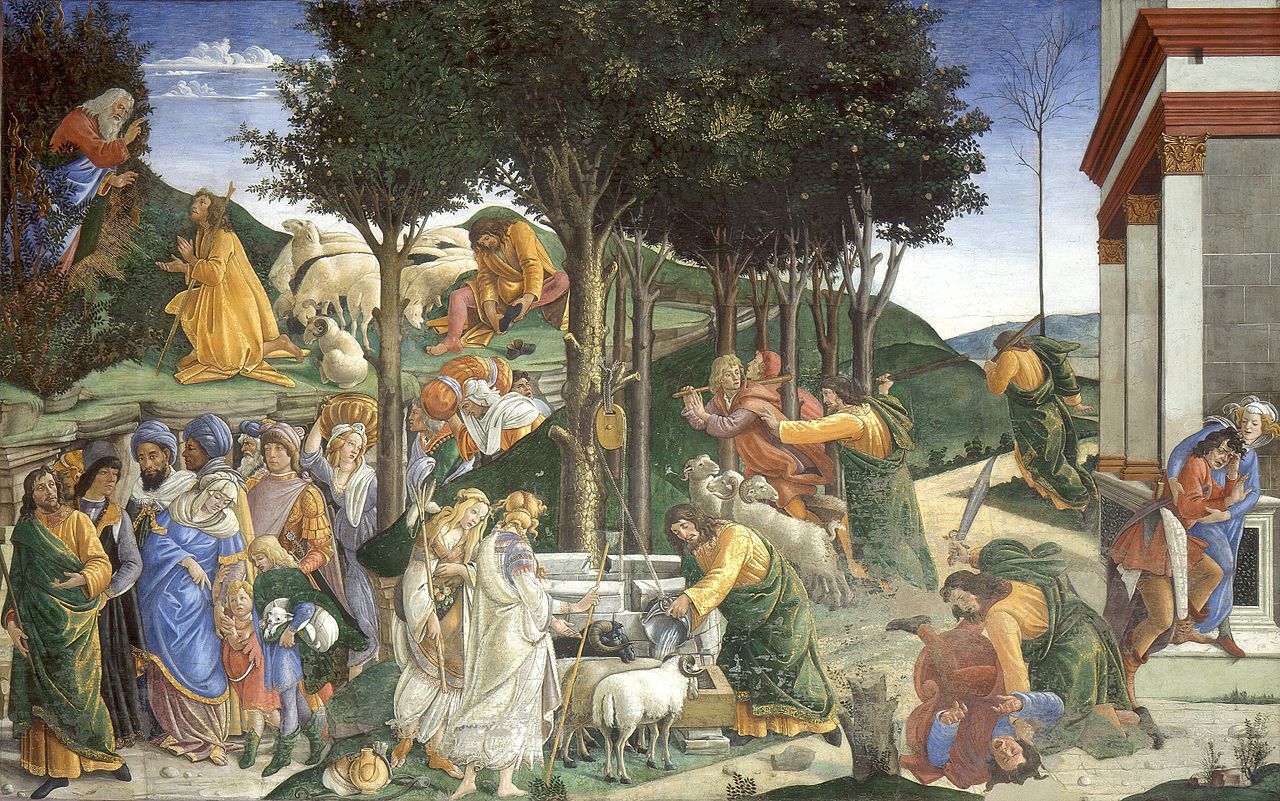The Trials and Calling of Moses by Sandro Botticelli, Exodus 2:17, Bible.Gallery
Artwork Description

This fresco, located in the second compartment on the south wall, is opposite The Temptation of Christ also painted by Botticelli on the wall of the Sistine Chapel. The two pictures are typologically related in that both of them deal with the theme of temptation. Botticelli integrated seven episodes from the life of the young Moses into the landscape with considerable skill, by opening up the surface of the picture with four diagonal rows of figures.
As the Moses cycle starts on the wall behind the altar, the scenes should, unlike the pictures of the temptations of Christ, be read from right to left: (1) Moses in a shining yellow garment, angrily strikes an Egyptian overseer and then (2) flees to the Midianites. There (3) he disperses a group of shepherds who were preventing the daughters of Jethro from (4) drawing water at the well. After (5,6) the divine revelation in the burning bush at the top left, Moses obeys God commandment and (7) leads the people of Israel in a triumphal procession from slavery in Egypt.